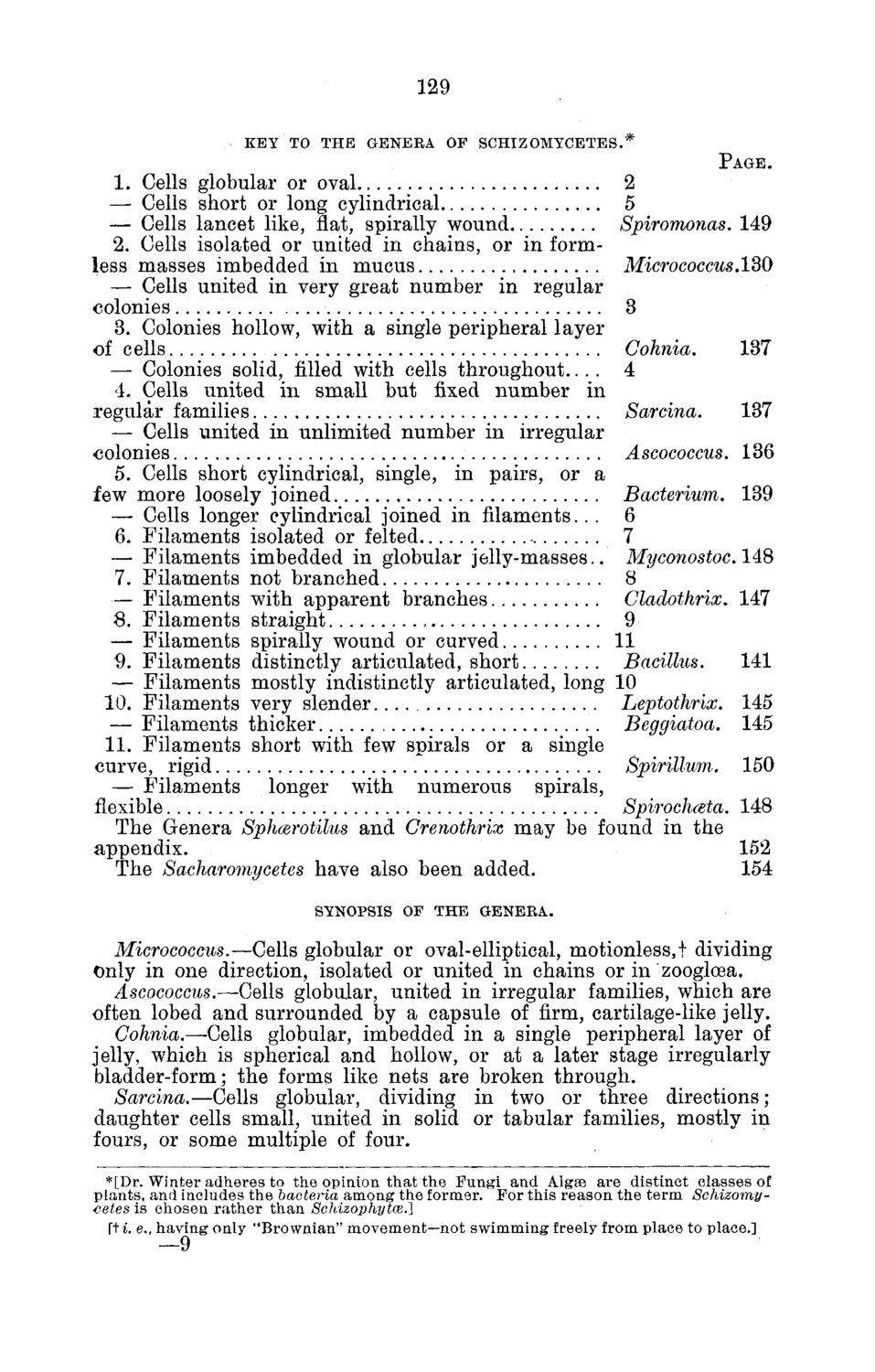| |
| |
Caption: Board of Trustees Minutes - 1882
This is a reduced-resolution page image for fast online browsing.

EXTRACTED TEXT FROM PAGE:
129 KEY TO THE GENERA OF SCHIZOMYCETES.* PAGE. 1. Cells globular or oval 2 — Cells short or long cylindrical 5 — Cells lancet like, flat, spirally wound Spiromonas. 149 2. Cells isolated or united in chains, or in formless masses imbedded in mucus Micrococcus.130 — Cells united in very great number in regular colonies 3 3. Colonies hollow, with a single peripheral layer of cells Cohnia. 137 — Colonies solid, filled with cells throughout.... 4 4. Cells united in small but fixed number in regular families Sarcina. 137 — Cells united in unlimited number in irregular colonies Ascococcus. 136 5. Cells short cylindrical, single, in pairs, or a few more loosely joined Bacterium. 139 — Cells longer cylindrical joined in filaments... 6 6. Filaments isolated or felted 7 — Filaments imbedded in globular jelly-masses.. Myconostoc. 148 7. Filaments not branched 8 — Filaments with apparent branches Cladothrix. 147 8. Filaments straight , 9 — Filaments spirally wound or curved 11 9. Filaments distinctly articulated, short Bacillus. 141 — Filaments mostly indistinctly articulated, long 10 10. Filaments very slender Leptothrix. 145 — Filaments thicker Beggiatoa. 145 11. Filaments short with few spirals or a single curve, rigid Spirillum. 150 — Filaments longer with numerous spirals, flexible Spirochceta. 148 The Genera Spharotilus and Crenothrix may be found in the appendix. 152 The Sacharomycetes have also been added. 154 SYNOPSIS OF THE GENERA. Micrococcus.—Cells globular or oval-elliptical, motionless, t dividing Only in one direction, isolated or united in chains or in zoogloea. Ascococcus.—Cells globular, united in irregular families, which are often lobed and surrounded by a capsule of firm, cartilage-like jelly. Cohnia.—Cells globular, imbedded in a single peripheral layer of jelly, which is spherical and hollow, or at a later stage irregularly bladder-form; the forms like nets are broken through. Sarcina.—Cells globular, dividing in two or three directions; daughter cells small, united in solid or tabular families, mostly in fours, or some multiple of four. * [Dr. Winter adheres to the opinion that the Fungi and Algse are distinct classes of plants, and includes the bacteria among the former. For this reason the term Schizomycetes is chosen rather than Schizophytce.] fti. e., having only "Brownian" movement—not swimming freely from place to place.] —9
| |